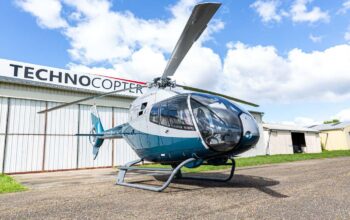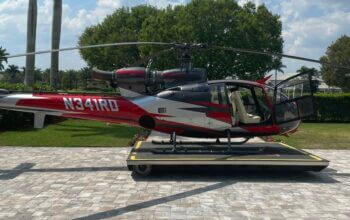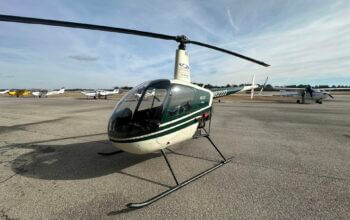While there is a great deal of hype surrounding new advanced air mobility technology, the expected service entry of eVTOL aircraft this decade will require developing lower profile day-to-day infrastructure and maintenance processes, a General Aviation Manufacturers Association (GAMA) official cautioned.

“Advanced air mobility really is going to come in stages,” Dave Dunning, GAMA’s director of global innovation and policy, said during a presentation at the Vertical Flight Society’s (VFS) eVTOL Symposium in Mesa, Arizona. “I think prioritization and sequencing is very important right now. Why? In order for us to move efficiently from the near term to that future advanced stage of more automated aircraft at a much higher tempo of operations, we need to enable the here and now first. That means we need to appropriately bucket and sequence our planning in a way that we can cross each bridge efficiently.”
He emphasized that regulations and standards regarding autonomous flying — the eventual goal of most eVTOL developers — are a secondary priority initially because the first vehicles entering service will be piloted.
“Near term, we’re speaking about operations and compliance with applicable regulations covering certificated pilots onboard the aircraft [operating] in all classes of airspace,” Dunning said. “What do we need to tackle here and now?”
To clear the path for eVTOL’s service entry — Joby Aviation and Archer Aviation are both planning to bring air taxis to market by 2025 — the new types of aircraft will have to be “equipped with communications, navigation and surveillance capability that’s consistent with traditional airspace and operational regulatory requirements … and conforming to current air traffic control infrastructure,” Dunning explained. “For the near term, as we think about developing infrastructure and new standards, we’re very focused on vertiports and landing and takeoff facilities.”
Such facilities will have to be ready to handle eVTOLs as soon as 2025, but also must be designed with a view toward managing high frequency operations in the future, Dunning said.
“What ground infrastructure is going to be required to enable, not only the initial entry into service, but those future states in five to 10 years when we’re looking at a much higher tempo of operations?” he said.
Aircraft charging stations are a critical element, and maintenance standards need to be established as well, Dunning said.
“[If] you’re working at a fixed-base operator and you’re bringing in these aircraft on a daily basis, how do you safely handle this aircraft? How do you safely work with these high voltage electric systems?” he said.
Also needed are routine and standard eVTOL battery testing procedures and rescue and firefighting plans in the case of an emergency.
“This may be seemingly obvious material, but you can’t get to the finish line and then realize, ‘I took that for granted and now I have a problem.’ Battery testing, rescue and firefighting all need to go into the near-term bucket as additional areas of standards development [for eVTOLs],” Dunning said.









